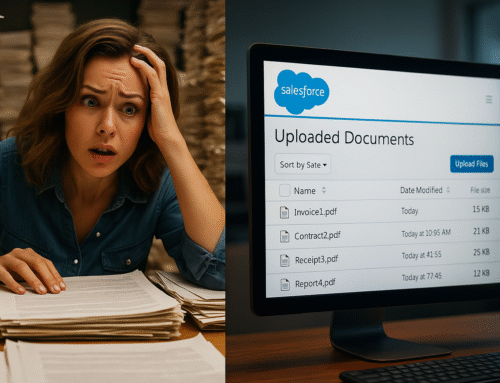
Salesforce administrators play a pivotal role in ensuring the efficiency and effectiveness of the Salesforce platform. This multifaceted role comes with a multitude of challenges.
Here are the most common ones faced by these administrators, along with practical tips to navigate them effectively:
- Data Management: Keeping the Digital Garden Pristine
Maintaining clean, accurate, and up-to-date data is a perpetual challenge for Salesforce admins. Duplicate records, data quality issues, and adherence to data governance policies demand meticulous attention.
Practical Tip: Implement validation rules and regularly conduct data audits to identify and rectify inconsistencies. Leverage tools like Salesforce Duplicate Management to streamline the process .
- User Adoption: Bridging the Gap Between Platform and User
Getting users to embrace Salesforce requires proactive efforts. Admins need to create comprehensive training materials, provide ongoing support, and foster user engagement.
Practical Tip: Develop user-friendly training materials, conduct regular training sessions, and establish a feedback loop for continuous improvement. Utilize Salesforce adoption metrics to gauge and enhance user engagement .
- Integration: Seamless Harmony with Other Tools
Salesforce often coexists with various tools like marketing automation and accounting software. Integrating these tools requires a strategic approach to ensure seamless data flow.
Practical Tip: Invest time in understanding the data architecture of each integrated system. Utilize middleware solutions like MuleSoft for efficient data integration, reducing the complexity of inter-system communication
- Security: Safeguarding the Digital Fortress
Ensuring the security of Salesforce data involves managing user roles, permissions, encryption, and vigilant monitoring for potential breaches.
Practical Tip: Regularly review and update user access permissions. Implement encryption for sensitive data, and leverage Salesforce’s built-in security features. Employ tools like Salesforce Event Monitoring to monitor user activity and identify potential security threats.
- Customization: Crafting a Tailored Salesforce Experience
Salesforce’s high level of customization offers immense power but can be challenging for admins without extensive programming experience. Creating custom objects, fields, tabs, and workflows requires a careful balance.
Practical Tip: Invest in Salesforce training resources to build programming skills. Utilize Trailhead, Salesforce’s online learning platform, to gain hands-on experience and proficiency in customization.
- Performance: Optimizing the Salesforce Ballet
The performance of Salesforce is influenced by data volume and customizations. Admins must proactively monitor and optimize the system to ensure smooth operations.
Practical Tip: Regularly assess system performance using Salesforce’s built-in tools. Implement data archiving strategies, and consider indexing frequently queried fields to enhance database performance.
- Backup and Recovery: Ensuring Data Resilience
Maintaining data availability is paramount. Admins should establish robust backup and recovery processes to safeguard against unexpected data loss or system failures.
Practical Tip: Regularly schedule automated backups and test data recovery procedures. Leverage Salesforce’s Data Export feature and consider third-party backup solutions for additional security
- Reporting and Analytics: Extracting Valuable Insights
Creating meaningful reports and dashboards from vast data sets requires a strategic approach and understanding of business needs.
Practical Tip: Collaborate with stakeholders to define clear reporting objectives. Utilize Salesforce’s reporting features, and explore third-party analytics tools like Tableau for advanced data visualization
- Document Management: Harnessing the Power of Paper
In the digital age, paper documents remain a formidable foe for Salesforce admins. The challenge lies in capturing, digitizing, and seamlessly integrating these physical artifacts into the Salesforce ecosystem.
Practical Tip: Implement a document management strategy leveraging tools like ccScan. This software allows for efficient scanning, capture, and digitization of paper documents directly into Salesforce1. Establish clear naming conventions and metadata tagging to organize documents logically within Salesforce, ensuring easy retrieval and accessibility.
- Compliance: Navigating Regulatory Waters
Salesforce admins are responsible for ensuring compliance with industry regulations. Staying informed about relevant laws and regulations is crucial.
Practical Tip: Establish a compliance calendar to track regulatory updates. Leverage Salesforce Shield, a platform designed for enhanced data protection and compliance features
- Scalability: Building for the Future
As businesses grow, Salesforce must scale accordingly. Admins should plan for scalability to accommodate an increasing number of users and growing data volumes.
Practical Tip: Regularly assess system scalability by monitoring user load and data growth patterns. Utilize Salesforce’s scalability features and consider consulting with Salesforce architects for in-depth scalability assessments.
- Governance: Navigating the Salesforce Constellation
Administering Salesforce in large organizations with multiple instances requires effective governance to manage diverse roles and responsibilities.
Practical Tip: Establish clear governance policies and document processes. Leverage Salesforce’s built-in features like Permission Sets and Field-Level Security to enforce governance rules.
- Managing Updates: Riding the Wave of Change
Frequent Salesforce updates necessitate vigilant tracking and timely implementation. Admins should proactively manage updates to benefit from new features and enhancements.
Practical Tip: Subscribe to Salesforce release notes and participate in Salesforce release readiness webinars. Develop a structured update management plan, including sandbox testing and phased deployment.
- Training: Empowering Users with Knowledge
Admins are tasked with training users on Salesforce, a challenge amplified by diverse user bases. Effective training materials and methods are essential.
Practical Tip: Customize training materials based on user roles and responsibilities. Leverage Salesforce’s Trailhead for interactive learning modules and create a centralized knowledge base for ongoing reference.
- Managing the Development Cycle: Navigating the Salesforce Code
The Salesforce development cycle involves testing, deploying, and troubleshooting. Admins must efficiently manage this cycle to ensure a smooth and error-free operation.
Practical Tip: Adopt a structured development methodology, utilize Salesforce Sandboxes for testing, and implement version control for code management. Leverage Salesforce DX for enhanced development and deployment processes[^15^].
In conclusion, Salesforce administration, while challenging, becomes a realm of opportunities with strategic planning, continuous learning, and the right tools. Admins, armed with practical tips, navigate these challenges to unlock the full potential of the Salesforce platform.
References:
Footnotes
- Salesforce Duplicate Management – Salesforce Documentation
- Salesforce Adoption Metrics – Salesforce Trailhead
- MuleSoft – MuleSoft Official Website
- Salesforce Event Monitoring – Salesforce Documentation
- Trailhead – Salesforce Trailhead
- Salesforce Performance Optimization Guide – Salesforce Documentation
- Salesforce Data Export – Salesforce Documentation
- Tableau – Tableau Official Website
- Salesforce AppExchange Document Scanning App – Scan directly to Saleforce
- Salesforce Shield – [Salesforce Documentation





